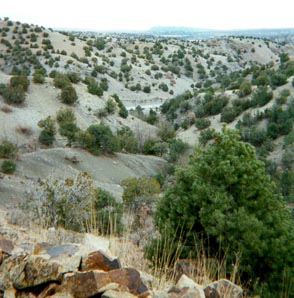 BACKGROUND
BACKGROUND
The Galisteo Basin Preserve, located 15 miles south of
RELEVANCE
A novel approach to fund-raising for the conservation of open space is being implemented at the Galisteo Basin Preserve. Many residents of Pinetop-Lakeside have voiced that they would like the Woodland Lake Park Tract to remain open space, however strategies to accomplish this have been not so forth coming. This technique for acquiring open space is also being implemented near major metropolitan areas in
Joe Sehee, executive director of the Green Burial Council is working with the Commonweal Conservancy to help finance the project with the creation of a four-hectare green cemetery where people can choose to be buried in an environmentally friendly way without embalming fluids and in biodegradable shrouds or wooden boxes. Roughly half the cost of a US $4,000 plot would help protect the surrounding landscape.
Green burials may prove to be a potential new tool to finance conservation and stewardship. Sehee's long-term vision is that land trusts would use green burials to protect one million acres worldwide in the next decade. An important step in making this a reality, he says, is the council's adoption last summer of certifiable standards. Much like standards for green-harvested wood or fair-trade coffee, the burial standards are designed to ensure that consumers get what they pay for when they sign up for a green burial. Sehee is hoping the same people who would choose a green burial will also see the value in this unusual approach to land protection.
The first modern-day green cemetery in the
One barrier to green burials as a conservation tool may be the ‘ick’ factor the necessity of dealing with the funeral home industry and the reaction that ‘there are dead people on our property.’
- Contact the Green Burial Council and the Commonweal Conservancy to assess the appropriateness for Pinetop-Lakeside.
- Contact the Arizona State Parks Department to discuss their interest in this concept.
- Have an appraisal done of the parcel by an independent appraiser so all parties will have an idea of the value of the land.
COMMONWEAL CONSERVANCY
117 N. Guadalupe Street Suite C Santa Fe, New Mexico 87501 phone: 505-982-0071 fax: 505-982-0270 web: http://www.commonwealconservancy.org/contact.phpGREEN BURIAL COUNCIL
Email: info@greenburialcouncil.org web: http://greenburialcouncil.org/faqs.phpwebdesign by chris rose
